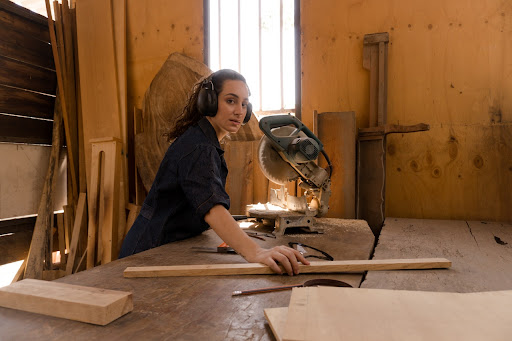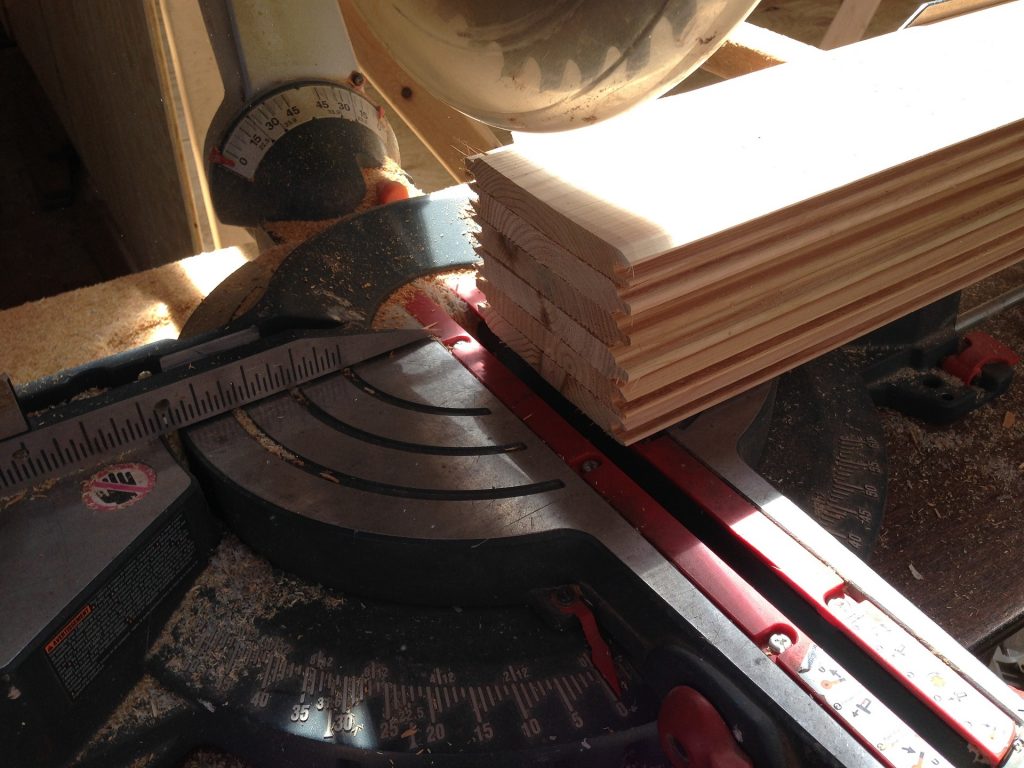Miter saws are highly convenient, extremely portable and they can do a variety of different jobs.
That being said, you need to be mindful of your miter saw’s size and how wide it can cut. Understanding that will help you be aware of the jobs your miter saw can and can’t do.
Quick Summary
In this post, we will discuss how wide a 10-inch miter saw can cut, some safety precautions you should take and how it compares to a 12-inch miter saw.
So without further ado, let’s get started.
What is the “Size” of a Blade?
People are often confused about what exactly it means when we refer to the “size” of a blade or the “size” of a miter saw.
The “size” of a miter saw (or its blade) refers to the diameter of the blade itself. As you can probably imagine, the bigger the blade is, the wider it can cut through a board. Miter saw sizes range from 7.25 inches to 12 inches.
Out of all the different sizes available out there, 10-inch miter saws and 12-inch miter saws are by far the most popular among users.
There is often debate amongst woodworkers about whether 10-inch miter saws or 12-inch miter saws are better. In our opinion, no one size is “better” than the other. Both of them have their specific applications.
If you use the appropriate-sized saw for the appropriate application, you will find the results to be fruitful. If you use the wrong-sized saw for a certain application, of course, you’re going to end up with undesirable results.
How Wide Can a 10-Inch Miter Saw Cut?
A miter saw that can use a maximum-sized blade of 10 inches is able to cut right angles off a board that can be up to 5.5 inches wide.
That’s more than sufficient for any piece of 2×6 lumber.
When it comes to 2×4 lumber, it can cut it with ease, even when you want to cut at a 45-degree angle.
When it comes to plywood, a 10-inch miter saw can cut up to 1.25 inches thick without causing any issues to the operator.
How Does it Compare to a 12-Inch Miter Saw?

Well, obviously, since a 12-inch miter saw has a blade that is 2 inches bigger, the saw is able to cut much wider pieces of wood.
A 12-inch miter saw can cut about 7 ½ inches wide which are more than enough to cut 2×8 lumber.
Even though a 12-inch miter saw can provide deeper cuts, it’s often heavier to handle and also more expensive. If you’re someone that does not typically work with 2x8s, you may be wasting your money.
12-inch miter saws are great for the people who need it. Hence, before you go out and buy one just because it can cut wider, assess your goals and ensure you actually have a need for it.
Some Safety Precautions
Before you actually start to operate your 10-inch miter saw to cut wood, there are some safety precautions you should take.
We recommend that you keep these precautions in mind and abide by them every time you have to do any woodwork.
These precautions are:
- Wear eye protection such as goggles. Bits and pieces of wood will fly around when you cut it with a miter saw. You don’t want those pieces flying into your eyes.
- Don’t wear loose clothing that could get caught in moving parts. If you have longer hair, you should tie it up as well.
- If possible, make sure that your workspace is well-ventilated. You don’t want to breathe in sawdust during operation.
- If you can’t ventilate your workspace well, consider wearing a face mask to protect yourself.
- Make sure the workpiece is properly and securely clamped before you start work on it with your miter saw.
- Remember to vacuum your workspace after every session. Keeping your workspace clean is the key to efficient and safe woodworking.
Gather all the tools and supplies before working with Miter Saws.
Operating Your 10-Inch Miter Saw
Standard miter saws consist of a circular saw blade that rotates while being fixed to a hinged frame.
This allows the user to lower the rotating saw blade onto the piece of wood in order to make the vertical cut.
You can use a miter saw by laying your workpiece either on the floor or clamped up on a workspace table.
Once the workpiece is secured, you can turn your miter saw on and slowly lower it onto the piece in order to make the cut.
If you’ve never used a miter saw before, it can be a good idea to practice the motion of bringing it down a few times while it’s turned off. This can help you develop an understanding of how heavy the saw is and where exactly the blade will land on the workpiece.
We highly recommend that you practice a whole bunch with scrap materials as a beginner. Make different angled cuts that could be used to join different pieces of scrap material together. Experiment and try to figure out different angles and what your miter saw can do.
Many people get their miter saw and never use it to its fullest potential. Experimentation is the key to breaking out of that mundane mindset and working with angles you may never have cut before.
Not only can experimentation give you new ideas about what to make for upcoming projects, but it can also help you find your “style” and unique way of working.
Working with scrap materials also helps you develop that “muscle memory”, which is crucial when you are working on long woodworking projects. These types of projects are typically quite tedious and require the same motion over and over again.
Wrapping Things Up…
We hope we’ve provided a clear picture of how wide a 10-inch miter saw can cut and how it stacks up against a 12-inch miter saw.
We all know that a 12-inch miter saw can cut deeper but oftentimes, people don’t need their saw to cut that deep for most projects.
Hence, we feel a 10-inch miter saw should still be your saw of choice unless you work regularly with thicker pieces of wood. If that’s the case, then a 12-inch one might be better for you.
If you have any questions, please let us know in the comments below.
If you want to know how wide other saws cut, visit Tools Advisor Pro.

